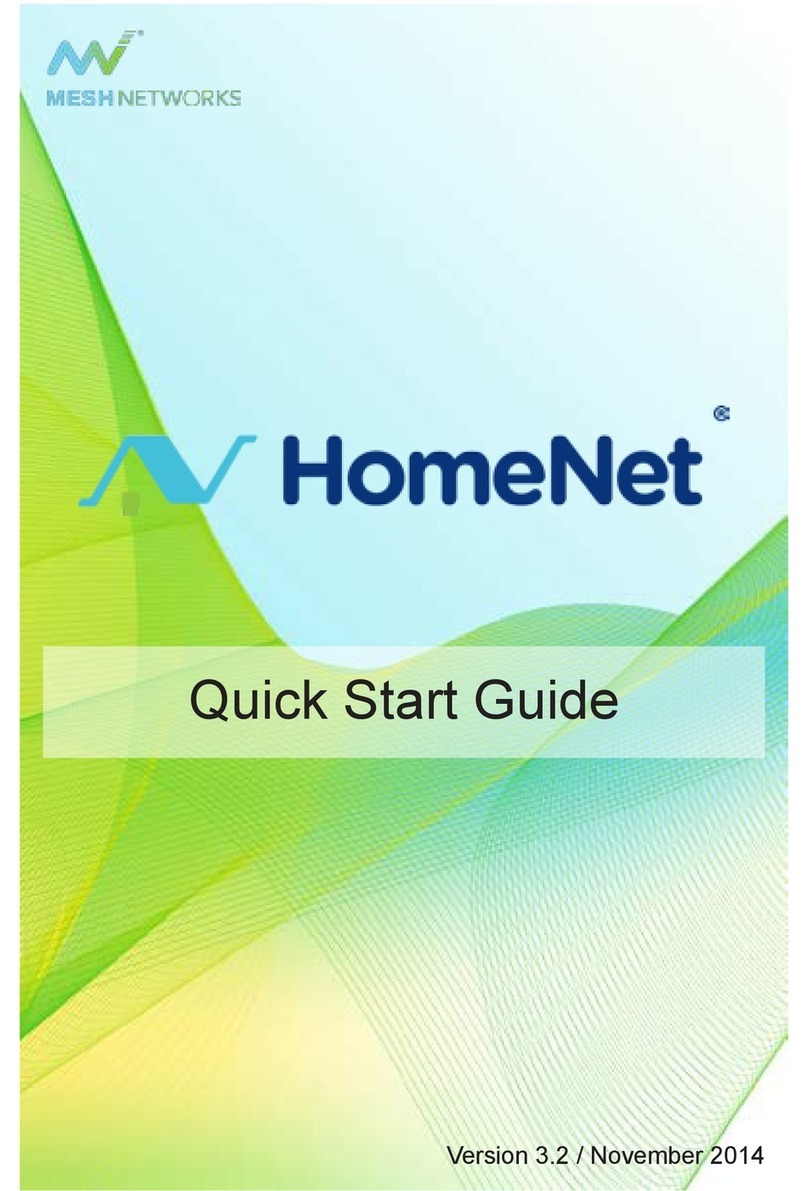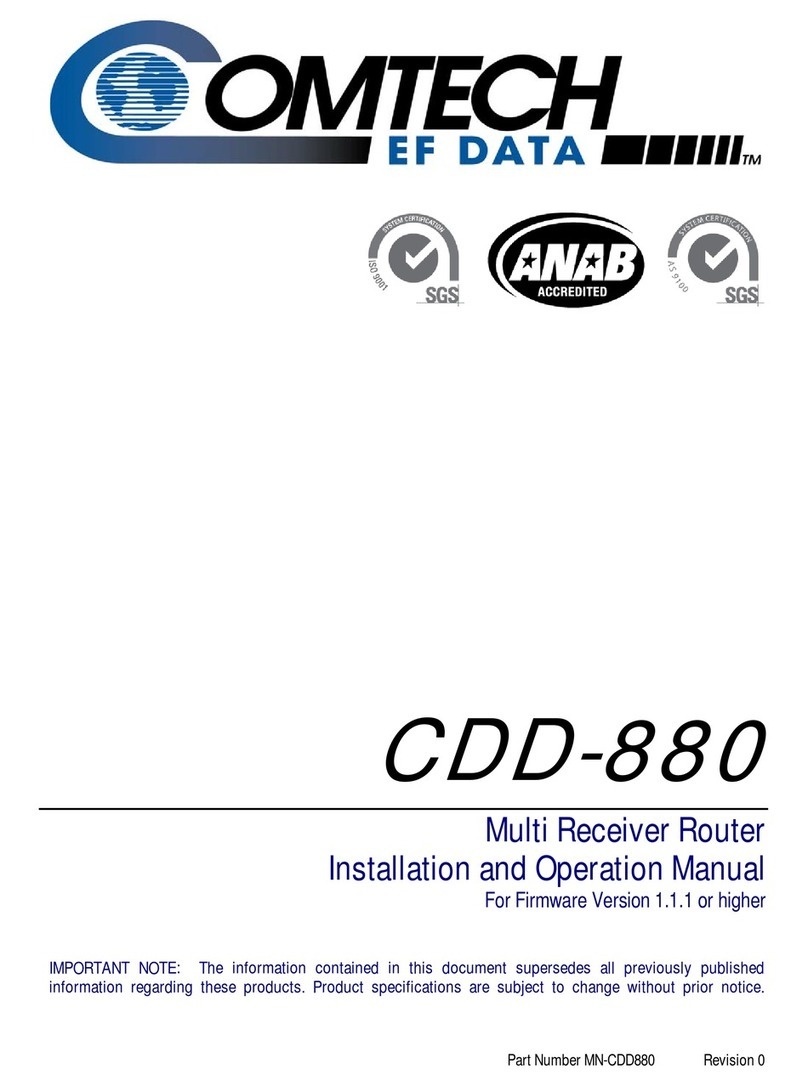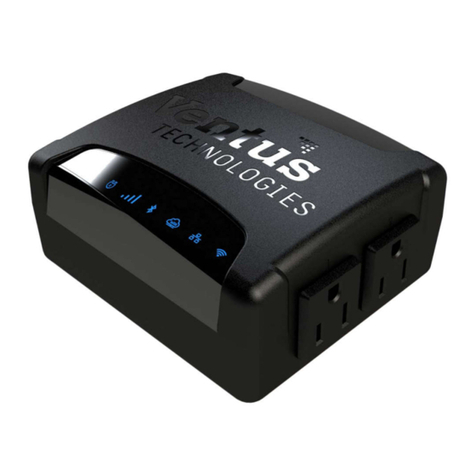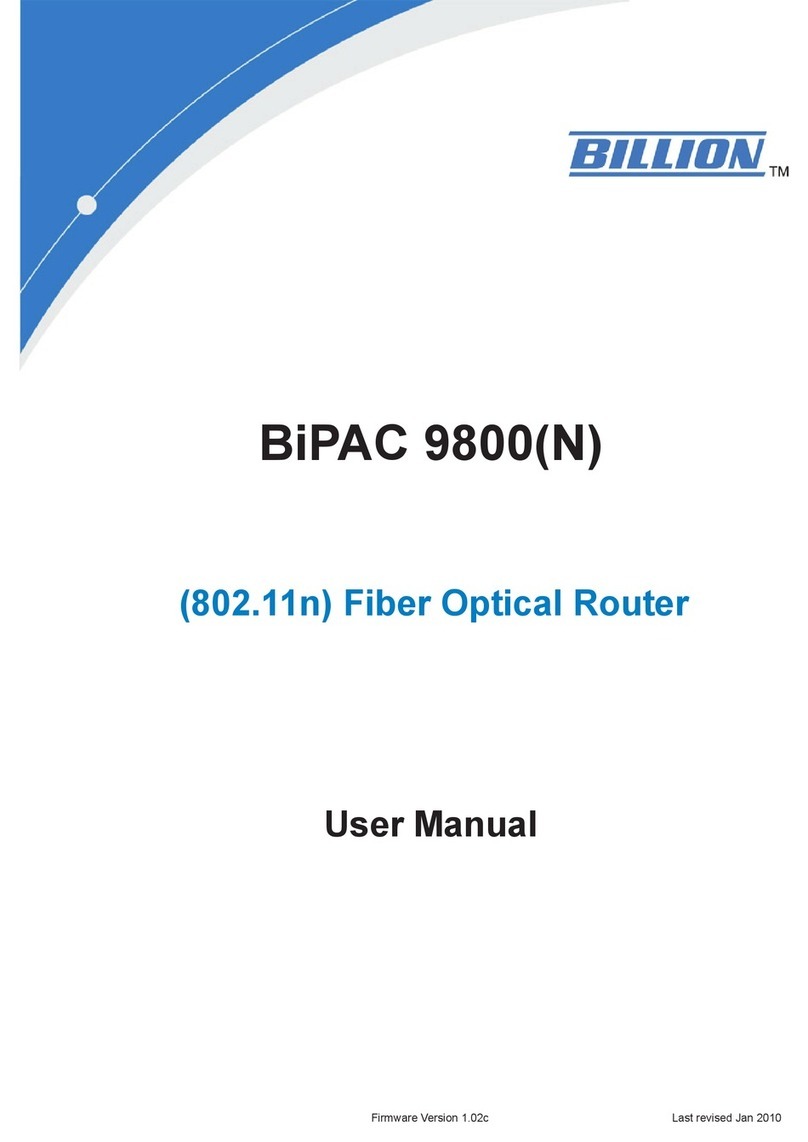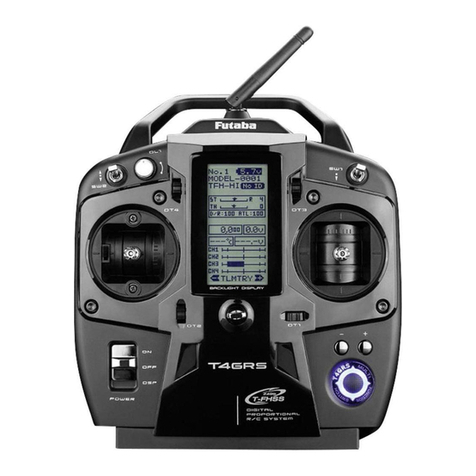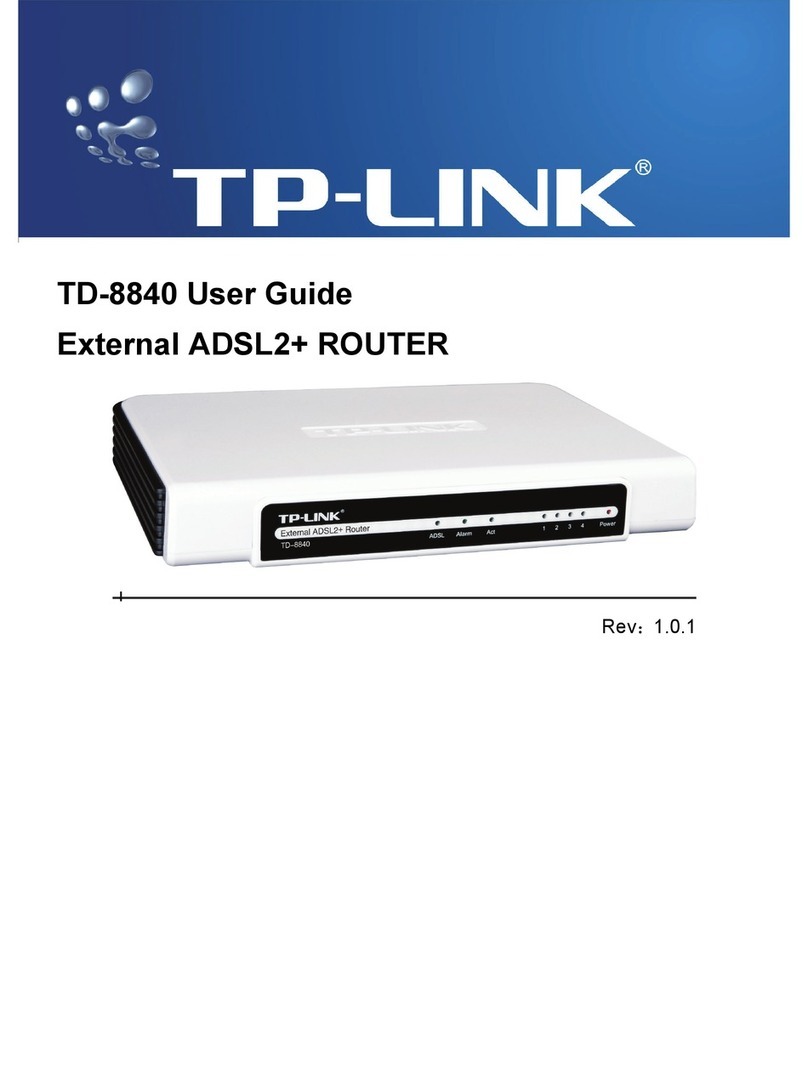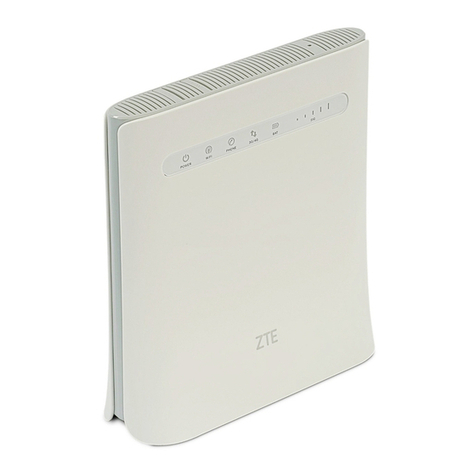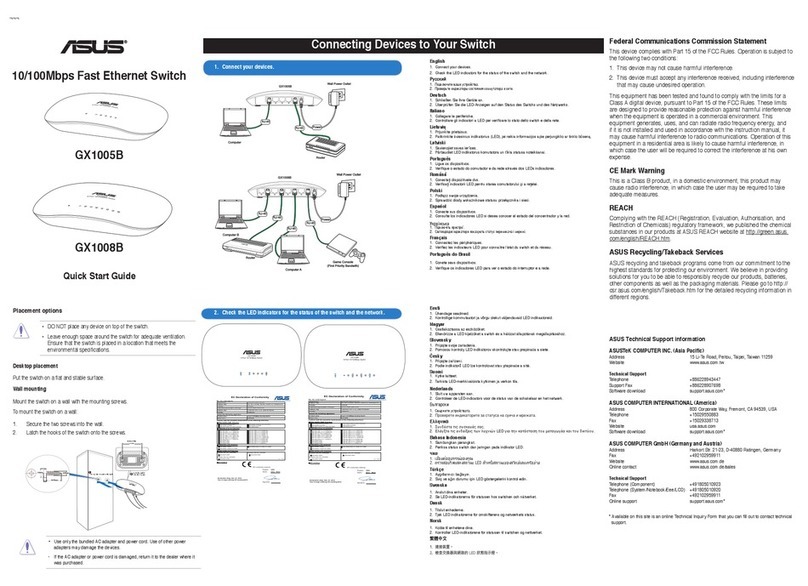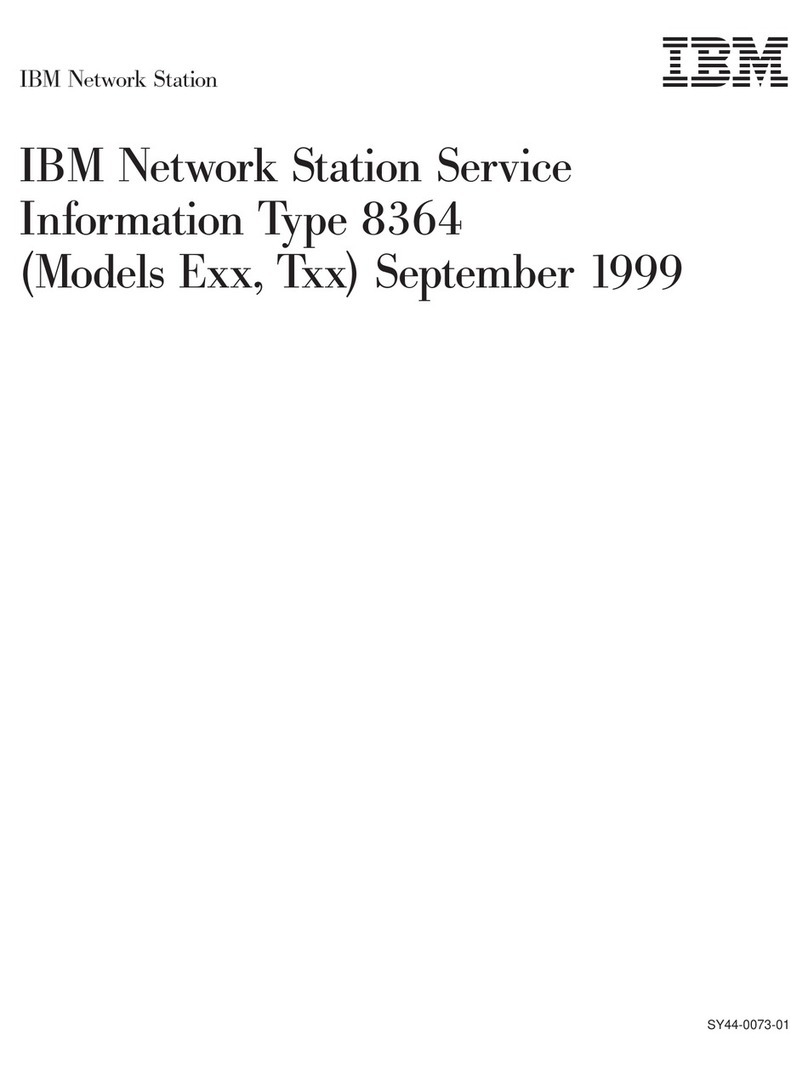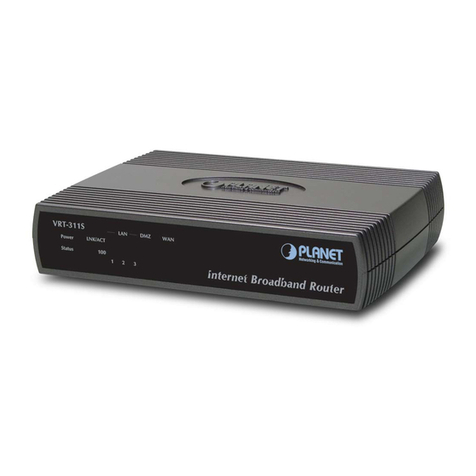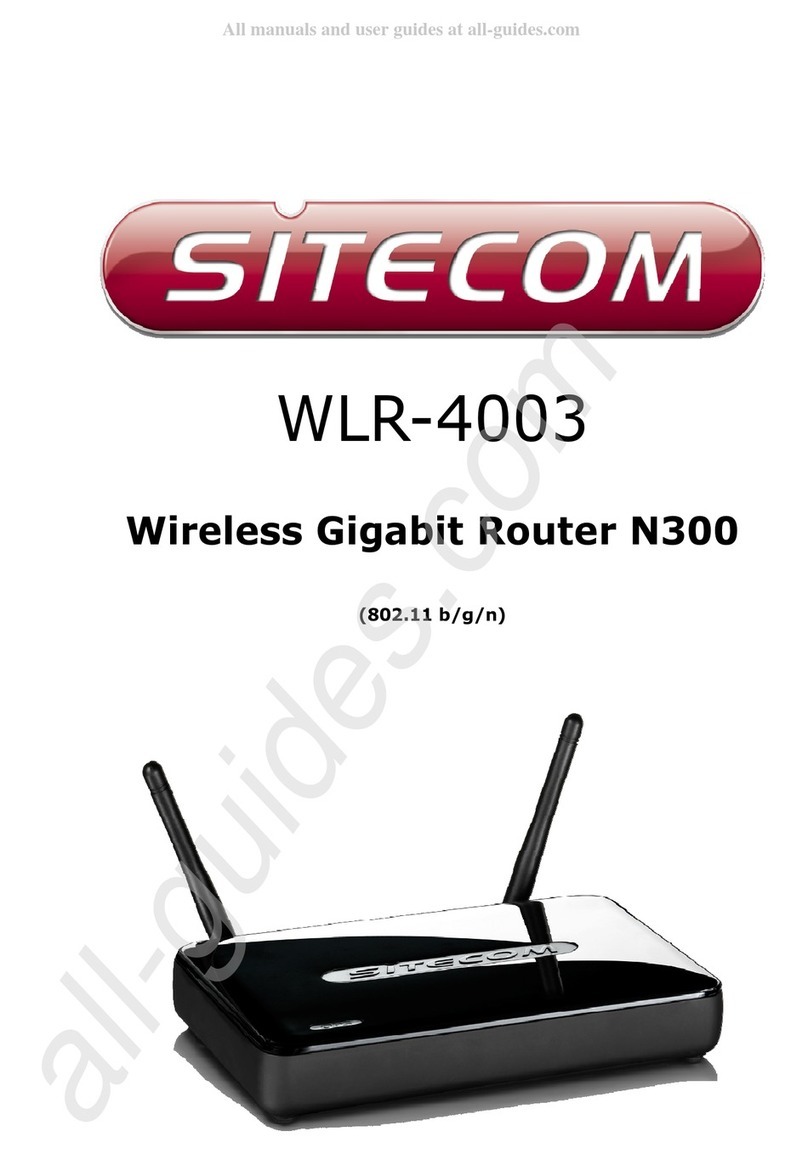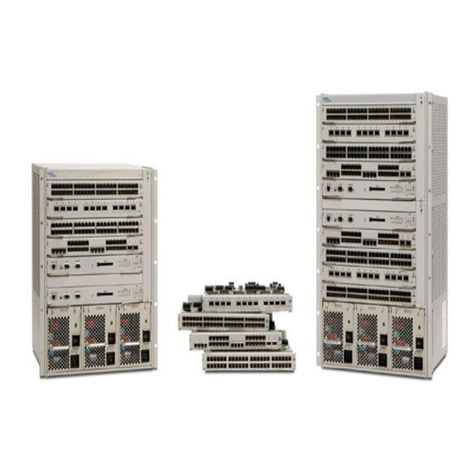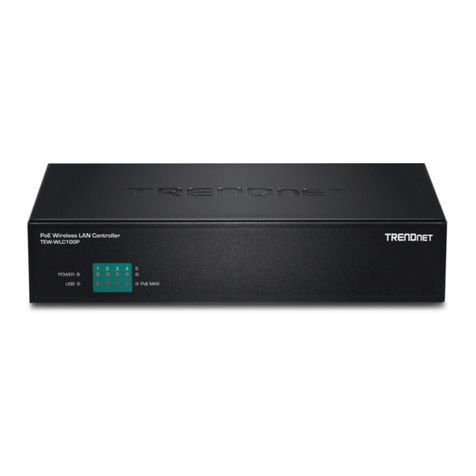MeshNetworks MEA PWR6300 User manual

Portable Wireless
Router
User’s Guide
Version 3.0
Copyright 2003-2004, MeshNetworks, Inc. All Rights Reserved


MEA PWR User’s Guide
Foreword
This document describes in detail the confidential and proprietary technology of MeshNetworks’
MEA™ Architecture. MeshNetworks’ products and technology are protected by US and
international patent and patent pending technology. This document represents the current MEA
design; the contents are subject to change at any time at the discretion of MeshNetworks, Inc.
MEA, MeshTray, and MeshNetworks’ logo are trademarks or registered trademarks of
MeshNetworks, Inc. All other product names and services identified throughout this publication
are trademarks or registered trademarks of their respective companies. No such uses or the
use of any trade name is intended to convey endorsement or other affiliation with this
publication.
Copyright © 2003-2004 MeshNetworks, Inc. All Rights Reserved
i


MEA PWR User’s Guide
Table of Contents
1PORTABLE WIRELESS ROUTER .......................................................................................1
1.1 Introduction.................................................................................................................1
1.2 What’s in the Box .......................................................................................................1
2INSTALLATION REQUIREMENTS.......................................................................................1
2.1 Portable Wireless Router (PWR)...............................................................................1
2.1.1 Equipment .........................................................................................................2
2.2 Record MAC Address of the PWR6300 ....................................................................3
2.3 PWR6300 Assembly...................................................................................................3
2.3.1 Deployment .......................................................................................................4
2.3.2 Deployment Tips................................................................................................4
2.3.3 Testing...............................................................................................................5
3INSTALLING THE MEA PORTABLE WIRELESS ROUTER ...............................................6
3.1 Device Administration: Configuring the PWR Devices...........................................6
3.1.1 Accessing the MEA Device Administration Web Pages....................................6
3.1.2 Configuring the Device....................................................................................10
3.1.2.1 Device Addressing.......................................................................................11
3.1.2.2 Network DHCP Scheme..............................................................................11
3.1.2.3 Statically Provisioned Scheme....................................................................12
3.1.2.4 User Supplied Scheme................................................................................12
3.1.2.5 Setting the User Supplied IP Address.........................................................13
3.1.3 Resetting the PWR..........................................................................................15
3.1.4 Restoring Factory Settings – User Supplied Mode Limitations .......................17
3.1.4.1 VMM Reset-to-Default Recovery In User-Supplied Mode...........................17
3.1.4.2 Reset the Device Addressing Mode Using DeviceManager........................17
3.1.4.3 Reset the Device Addressing Mode via the Configuration Web Page.........17
3.1.4.4 Reset the User-Supplied Parameters via the Configuration Web Page......17
iii

MeshNetworks
3.1.5 Restoring Factory Defaults Normal Operations...............................................18
3.1.6 Changing the Web Password..........................................................................20
3.1.7 Upgrading the Device Firmware......................................................................22
3.2 External Device Provisioning..................................................................................24
3.2.1 Connecting to the Ethernet Port......................................................................25
3.3 Infrastructure Requirements...................................................................................25
3.3.1 PWR MAC Addresses.....................................................................................25
4LICENSE AND WARRANTY INFORMATION ....................................................................27
4.1 Important Information..............................................................................................27
5FCC REGULATORY INFORMATION.................................................................................29
5.1 FCC Information .......................................................................................................29
iv

MEA PWR User’s Guide
List of Figures
Figure 2-1 PWR6300 Identification Label ............................................................................3
Figure 2-2. PWR External Connection Point.......................................................................3
Figure 3-1. Enter Network Password Initial Web Page Authentication Dialog .................7
Figure 3-2. MEA Device Administration Redirecting Web Page.........................................8
Figure 3-3. MEA Device Administration Home Page (Super User Login)..........................9
Figure 3-4. EWR (PWR) Device Administration Configuration Page (Super User Login)
10
Figure 3-5. Configuration Change Verification..................................................................13
Figure 3-6. System Update Save Completed Web Page ...................................................14
Figure 3-7. Device Reset Prompt Web Page ......................................................................15
Figure 3-8. Device Reset in Progress Web Page...............................................................16
Figure 3-9. Restore Factory Settings Web Page................................................................18
Figure 3-10. Confirm Changes Window for Restore Factory Settings .........................19
Figure 3-11. Factory Settings Restored Web Page..........................................................19
Figure 3-12. Enter New Password Web Page..................................................................20
Figure 3-13. Confirm Changes Window for Enter New Password .................................21
Figure 3-14. Password Changed Confirmation Web Page..............................................21
Figure 3-15. Update Device Firmware Web Page.............................................................22
Figure 3-16. Confirm Upload Window for Firmware Update..........................................22
Figure 3-17. Firmware Upload Progress Web Page.........................................................23
Figure 3-18. External Device Provisioning Table.............................................................24
v


MEA PWR User’s Guide
1 Portable Wireless Router
1.1 Introduction
Thank you for purchasing the MEA Portable Wireless Router (PWR). MEA is a wireless
communication system capable of supporting high data rate mobile communication at variable
rates of vehicular speeds.
The Portable Wireless Router (PWR™) is designed to be deployed in traffic cabinets or inside
outdoor kiosks for wireless coverage in large geographic areas to provide wireless network
access to one or more IP devices via its built-in RJ45 Ethernet port. The PWR efficiently
combines the functionality of a MeshNetworks Wireless Router and client modem in to a single
cost-effective wireless network component. This makes it easy for any Ethernet ready device to
access a MeshNetworks Enabled Architecture (MEA™) mobile broadband network. IP-enabled
computers, video cameras, sensors, signs, signals, etc. can all be Mesh-Enabled to send and
receive data at burst rates of up to 6 Mbps. All standard Wireless Router functionality including
Multi-Hopping™, near line of sight communications and geo-location services are fully
supported.
The MEA Portable Wireless Router is configured for the connection of multiple IP addressable
devices using standard Ethernet connectivity. This allows devices that cannot accept the
PCMCIA based WMC3600 product to function transparently on a MEA network without drivers.
This document provides detailed installation and configuration instructions for installing the MEA
EWR.
1.2 What’s in the Box
Each MEA EWR is a full-featured wireless networking device. The following is a list of the items
provided with each PWR:
MEA Portable Wireless Modem
15 feet 18 AWG wire, rated for 12 VDC with 2 amp in line fuse
PWR cable connector (end 1): Switchcraft EN3C2F
PWR cable connector (end 2): Molex 19121-009 spade lugs
Mag Mount Antenna
2 Installation Requirements
NOTE: All Intelligent Access Points (IAPs) on the MEA network require a software upgrade to
support PWR Devices.
The MEA Portable Wireless Router will require the following in a typical installation:
• 12 VDC Power from vehicle or other direct current power supply
• A Hub or Switch (if more then 1 Ethernet device will be used)
• Antenna and RF cabling appropriate for use in the 2.4 Ghz band.
2.1 Portable Wireless Router (PWR)
The PWR6300 Portable Wireless Router (PWR) has the same functionality as the EWR, but in a
1

MeshNetworks
smaller form factor like the VMM. It combines the functionality of a Wireless Router and the
Wireless Modem Card into a single device. By adding an Ethernet port to a Wireless Router,
MeshNetworks enables video cameras, computers or any other Ethernet-capable device to get
high-speed access to the MEA wireless broadband network, without the need to purchase a
separate Wireless Modem Card. The PWR also provides the same functionality as the EWR,
including network routing, Multi-Hopping™ and geo-location services.
The MEA Portable Wireless Router 6300 (PWR6300) is an infrastructure device positioned in a
fixed location, such as on a traffic cabinet or outdoor kiosk.
The PWR6300 provides range extension, a means to route around obstructions, a fixed location
reference for use in Geo-Location, and the capability of enabling IP devices.
2.1.1 Equipment
A PWR6300 is used similarly to a wireless router within a MEA network. A PWR6300 will be
used with MeshNetwork’s infrastructure devices: IAP6300 and MWR6300. MeshManager
software is used to manage a PWR in the MEA network.
The following list defines the standard MEA hardware components to install a PWR:
• EWR Box (same as a VMM package) with N-type Antenna Connector
• 15 feet 18 AWG wire, 12 VDC with 2 amp in line fuse
• Mounting Bracket
The Network Operator must supply the following:
• Mounting Location
• Power Source (12V DC)
• Hand tools for bracket installation
Optional Equipment:
• An Antenna Cable and connector must be ordered separately.
• Antenna is N-Type connector
• Antenna Options are the following:
Manufacturer Part Number Gain Usage
Maxrad BMMG2400ML195MSMA 0 dBi Mobile
Antenex TRA24003 3 dBi Mobile
2

MEA PWR User’s Guide
2.2 Record MAC Address of the PWR6300
The transceiver and SBC (Ethernet) MAC addresses are recorded on the label located on front
side of the PWR unit.
Record these numbers in the PWR MAC Addresses table, because they will be required later to
configure and provision the device.
Figure 2-1 PWR6300 Identification Label
2.3 PWR6300 Assembly
The PWR6300 Assembly shows the external connection points on a PWR6300 box.
N-Type
Antenna Power
Reset Power
Connect Ethernet
(Crossover MDI
-
Figure 2-2. PWR External Connection Point
Install the PWR using the following procedure:
3

MeshNetworks
1.
2.
3.
4.
5.
Mount the PWR in a traffic cabinet or kiosks. The device is not waterproof. The device should be
reasonable protected from moisture and other exposed outdoor environments. Refer to the
mounting procedure in the assembly section of this document.
Connect the antenna to the N-type connector.
Insert the Power Plug into Power Connector.
Verify the MAC address and ETH address has been recorded in Section 3.3.1, as it will be
required to configure and test the device.
The Test Port is unused during deployment.
Figure 2-3 PWR6300 Cabinet Mounting
2.3.1 Deployment
When deploying the EWR6300, the antenna should be a minimum of 30 inches from any nearby
metal poles to avoid distortion of the RF pattern. The antenna must have a separation distance
of at least 2 meters from the body of all persons and must not be co-located or operating in
conjunction with any other antenna or transmitter. Users and installers must be provided with
antenna installation and transmitter operating conditions to satisfy RF exposure compliance.
Typically, Portable Wireless Routers are distributed within a network and are used as wireless
routers. A rule of thumb is to deploy 2-3 hop networks to optimize range, latency, and
throughput to subscriber devices.
The PWR6300 installation location must provide applicable DC power for the device.
2.3.2 Deployment Tips
Locate the antenna to minimize multipath:
Minimize interference from nearby transmitters
4

MEA PWR User’s Guide
Maximize chance of a direct line of sight connection to other devices.
The antenna supplied is designed to be mounted vertically.
2.3.3 Testing
Verify the operation of the PWR6300 using the following procedure:
1. Apply power to the PWR6300 – power reset button will be illuminated to red.
2. Obtain the transceiver MAC address and the ETH address that was recorded in Section Error!
Reference source not found.. The address will be in the format 00-05-12-0A-xx-yy for the
transceiver and 00-05-12-30-xx-yy for ETH.
3. From MeshManager, display devices using the MAC address.
4. Select the appropriate PWR (EWR template) in the device tree, and then ping the device (right
click and select ping).
A successful response to the ping command verifies that the PWR is communicating to the
infrastructure devices.
5

MeshNetworks
3 Installing the MEA Portable Wireless Router
3.1 Device Administration: Configuring the PWR Devices
The PWR provides network access to one or more IP devices connected to the Ethernet port of
the PWR. In order for the PWR to provide service to the IP devices, some configuration must be
set up prior to connecting the IP devices.
The PWR serves as a default gateway for the attached IP devices. Because some devices
expect the default gateway to reside on the local subnet, the address that the PWR uses for
gateway service (on the wired interface) must be configurable. Some consideration should be
used in selecting a gateway address for the PWR.
The local default gateway address is used only on the wired interface, and is only visible to the
attached IP devices. It is not advertised to the wireless network, and the network cannot access
the PWR using this gateway address. The PWR has another IP address for the wireless
interface that can be used to access the PWR from the network. Because is gateway address is
limited to the local wired interface, the same address could be used for the gateway service in
several PWR devices. The local gateway should be a part of the overall subnet chosen for your
MEA network.
When selecting IP addresses for the PWR, care must be taken to ensure that the selected IP
addresses do not conflict with any other devices on the mea network.
3.1.1 Accessing the MEA Device Administration Web Pages
To modify the IP configuration for the PWR using the web interface, you must know the IP
address assigned to the wireless interface of the PWR. The IP address can be determined from
MeshManager, or from the DHCP server (once the device is configured for DHCP). The default
IP address for the PWR wireless interface is derived from the transceiver MAC address
(10.xx.yy.1, where the MAC address is 00:05:12:0A:XX:YY), similar to the default IP addresses
described in Section 3.2.
Once the IP address is known, you can access the web page of the device. Point your web
browser to the IP address of the PWR. In the following examples, the PWR address is
172.16.1.53 and the web page should be found at http://172.16.1.53/.
6

MEA PWR User’s Guide
Once the web browser is directed to the web page of the PWR, you will be prompted for a
username and password. A dialog box similar to the following should show up if you are using
Internet Explorer:
Figure 3-1. Enter Network Password Initial Web Page Authentication Dialog
The username is admin, and the default (initial) password is admin.
The password for the admin account should be changed during installation.
The device has two accounts for the web pages - an administrative account (username:admin,
default password:admin), and an access account (username: monitor, default password:
monitor). The administrative account must be used for provisioning the device, and the access
account may be used for monitoring the status of the device.
The installation procedure described here requires administrator access. Alternatively, all of the
parameters that are provisioned via the web page may be provisioned via MeshManager
instead.
The administrator has the ability to change the password for the access account.
NOTE: If you are running a PWR as a standalone device, the configuration web page can be
reached by connecting a PC to the wired interface.
7

MeshNetworks
After the login authentication has been completed, the web browser will display a redirecting
page, and your browser will automatically transition to the home web page for MEA Device
Administration.
Figure 3-2. MEA Device Administration Redirecting Web Page
8

MEA PWR User’s Guide
Figure 3-3. MEA Device Administration Home Page (Super User Login)
The MEA Device Administration home page provides you with some basic information about the
device, including the IP addresses assigned to the device, the MAC addresses of the device,
the firmware revision number, and the reported link quality for the link to the IAP. In addition,
links are provided to web pages for device configuration, password management, firmware
upgrades, device reset, and restoring the factory default configuration.
9

MeshNetworks
3.1.2 Configuring the Device
Once you have accessed the MEA Device Administration home page, click on the Configuration
tab to display the IP address configuration.
Figure 3-4. EWR (PWR) Device Administration Configuration Page (Super User Login)
The EWR (PWR) Device Administration (Super User Login) page will allow you to change the
configuration of the PWR. The fields displayed on this page are described below.
Field Name Field Description Field Default Value
System Name This is the name of the device as shown by
MeshManager
10

MEA PWR User’s Guide
Field Name Field Description Field Default Value
RDATE Server IP
Address The IP address of the RDATE server. This is
usually the MiSC when operating in
infrastructure mode. The RDATE server
provides the current date to the EWR. The
EWR can operate without an RDATE server.
172.31.0.20
Wired Interface
Address The PWR will tell the attached Ethernet devices
to use this address for the default gateway, and
the PWR will use the address when accessing
the local Ethernet segment.
MAC-derived
Wired Interface
Subnet Mask This is the subnet mask for the local Ethernet
segment. 255.255.0.0
DHCP Lease Time This is the duration (in seconds) of the DHCP
leases that the PWR offers to the attached
Ethernet devices.
300
Device Priority The Device Priority provisioning area allows the
operator to set the priority assigned to wireless
messages transmitted by this device.
Geo Reference The Geo Reference area allows the operator to
provision the exact location of the PWR so that
it can serve as a geographical reference for the
mea network. Enter the Latitude and Longitude
in degrees and the Altitude in feet.
The External Device Provisioning frame of this web page is described in Section 3.2.
A similar screen will be displayed for the access account (the web page will indicate Normal
User Login). Normal users can change only those settings for which they have system
privileges.
3.1.2.1 Device Addressing
With mea Release 3.0, the concept of modes has been replaced by a Unified Modes of
operation addressing scheme. The concept of unified modes of operation centers on the current
state of network communication: Associated State and Unassociated State. There are three
addressing schemes which allow the IT manager increased flexibility in deployment.
3.1.2.2 Network DHCP Scheme
Operation under the Network DHCP scheme is similar to that of Release 2 in Infrastructure
Mode. The primary difference is users are now allowed to temporarily wander outside of the
network infrastructure without losing connectivity.
Network DCHP requires that the user's host device be configured to request an address from a
DHCP server and the inclusion of a DHCP server in the core network configuration to answer
these requests. With Network DHCP selected, the network device will forward any DHCP
requests to the core network once it becomes associated and establishes communications with
the infrastructure.
11

MeshNetworks
The server may be configured by the operator to hand out temporary or static leases. The user
must associate and acquire an address from the network before establishing communications.
Once a lease has been granted, the address may be dragged out of network coverage for the
remainder of the lease or, if a static lease was granted, until the next power cycle. If the lease
expires or the user cycles power while outside of network coverage, the user will again lose the
ability to communicate.
This scheme is best for a larger, closely managed network of subscribers who don't need to
communicate or communicate only briefly outside of network coverage.
3.1.2.3 Statically Provisioned Scheme
Operation under the Statically Provisioned scheme is similar to that of Release 2 in Peer-to-
Peer Mode. The primary difference is that addresses are configured by the network operator
rather than hashed from the MAC address. This serves to eliminate the 10.x.x.x limitation on the
network range.
When operating under the Statically Provisioned scheme, the network device will accept DHCP
requests from the user's host and internally generate responses to grant the host an IP address
and assign any other provisioned options.
This scheme requires that the host be configured to request an address from a DHCP server
but does not require a DHCP server on the core network.
It should be noted that a DHCP server can still exist on the network to hand out addresses to
other nodes using the Network DHCP Scheme as long as the server's address range does not
conflict with addresses assigned to devices using the Statically Provisioned or User Supplied
Schemes.
The granted IP addresses granted by the server and options are configurable per-device using
MeshManager. The internally generated DHCP messages will assign the host a static lease to
the provisioned address, which may be freely used to communicate while associated or
unassociated.
The operator must ensure that the provisioned addresses are routable and do not conflict with
any other addresses in use. The operator is free to provision any option ordinarily provisioned
by a DHCP server (subnet mask, DNS, etc.) through programming of the appropriate fields in
each device using MeshManager.
This scheme is ideal for a managed network of users who regularly need to communicate inside
and outside of network coverage or for a network lacking a DHCP server.
3.1.2.4 User Supplied Scheme
Operating under the User Supplied scheme, the user's host device is configured to use a fixed
IP address and subnet mask. The user is responsible for configuring options that would
otherwise be configured by a DHCP server.
It is also up to the user to ensure that the assigned address is routable on the core network (if
core network access is needed) and that it does not conflict with other addresses in use. This is
analogous to and carries the same caveats as plugging an Ethernet card into a LAN and
manually assigning an address to the card.
The user is free to communicate while associated or unassociated. This scheme is ideal for
small, unmanaged networks lacking a DHCP server.
All of these schemes may be assigned per device, either by the user or by the network
12
Table of contents
Other MeshNetworks Network Router manuals
